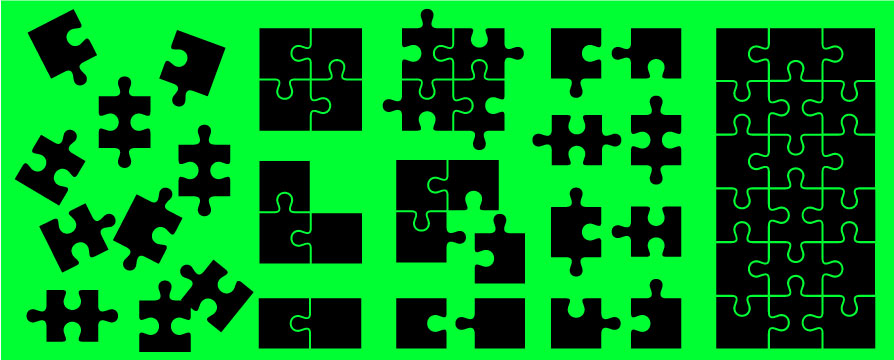The Math Genius of David Dobrik’s Hundred Thousand Dollar Puzzle Game

YouTube personality David Dobrick is giving people the chance to win $100,000 by solving a jigsaw puzzle.
Sounds like easy money if you’ve used quarantine to perfect your jigsaw-puzzling skills. But before you take the gamble and purchase the QR-clad puzzle (like the 100s of thousands of other buyers), we ask: Is it worth it? Aside from adding to your stack of jigsaw victories, should you invest in the puzzle, expecting to actually win something?
There’s only one way to find out: Let’s do the math.
Is the $100,000 Puzzle Worth the Gamble?
When trying to decide if a gamble is worth it, expected value is the most important thing to look at. Expected value is the average result you’d get if you played many, many times — and it’s a good way to judge how much each puzzle is worth.
If the expected value is positive, then in the long run, you will make money by playing. If it’s negative, you will lose money in the long run. Of course, expected value only crunches cold hard numbers, so it can’t take into account how much value you’ll get from the joy of solving the puzzle itself.
How to Calculate Expected Value
To compute the expected value, we multiply the value of each outcome by the probability that that outcome occurs. Then, we add up all the results.
Here’s an example using coins: If you flip a coin and you win $10 on heads and lose $5 on tails, the expected value would be $2.50.
Based on this, we can determine that this coin flipping game has a pretty good expected value.
The $100K Puzzle’s Expected Value
Let’s see how the $100K puzzle shakes out, using expected value. In the table below, we’ve charted the prize money, the net winnings (prize money minus the $30 puzzle cost), and the probability (calculated using the odds for each prize tier).
In the last column, we multiply the net winnings (or the value of the outcome) by the probability.
When we add up the numbers in the final column, we get an expected value of –$27.50.
By the way, the AoPS Problem Solvers out there might have noticed we rounded a little to get these numbers. But the result is really close to right!
This result means that each puzzle is worth –$27.50. That’s really bad! For comparison, the expected value of a lottery ticket is usually minus a few cents.
The Verdict: Will You Win the Hundred Thousand Dollar Puzzle?
So what’s the final verdict? We say it’s not worth the gamble. Our AoPS Problem Solvers would know not to buy this puzzle — unless, of course, they really enjoy solving puzzles with QR codes on them! Still, more than 17,000 optimistic people bought a hundred thousand dollar puzzle within the first hour of its release.
The Real Winner of David Dobrik’s Puzzle Challenge? David Dobrik
Still need more proof as to why you’ll likely lose and David will come out on top? We computed a few other values that help explain.
-
The probability of making a profit is only about 0.65%. Meaning, you’re almost guaranteed to lose by playing this game!
We got here by adding up the probabilities in rows 1 through 6 of the table above, since those are the rows where you make a profit.
-
For David Dobrick to guarantee a profit (excluding shipping and manufacturing costs), he needs to sell at least 7,580 puzzles. Given that he sold over 17,000 in the first hour, it’s looking more than promising that he’ll win far more than the $100K jackpot. In fact, if he sells out, he’ll make $2,753,405, to be exact!
Solve Complex Real-World Problems with AoPS
Want to gain the problem-solving skills to figure out real-life challenges like these? Learn more about our advanced K12 math curricula at Art of Problem Solving or compare our three program offerings.
Reference Chart: Odds of Winning










